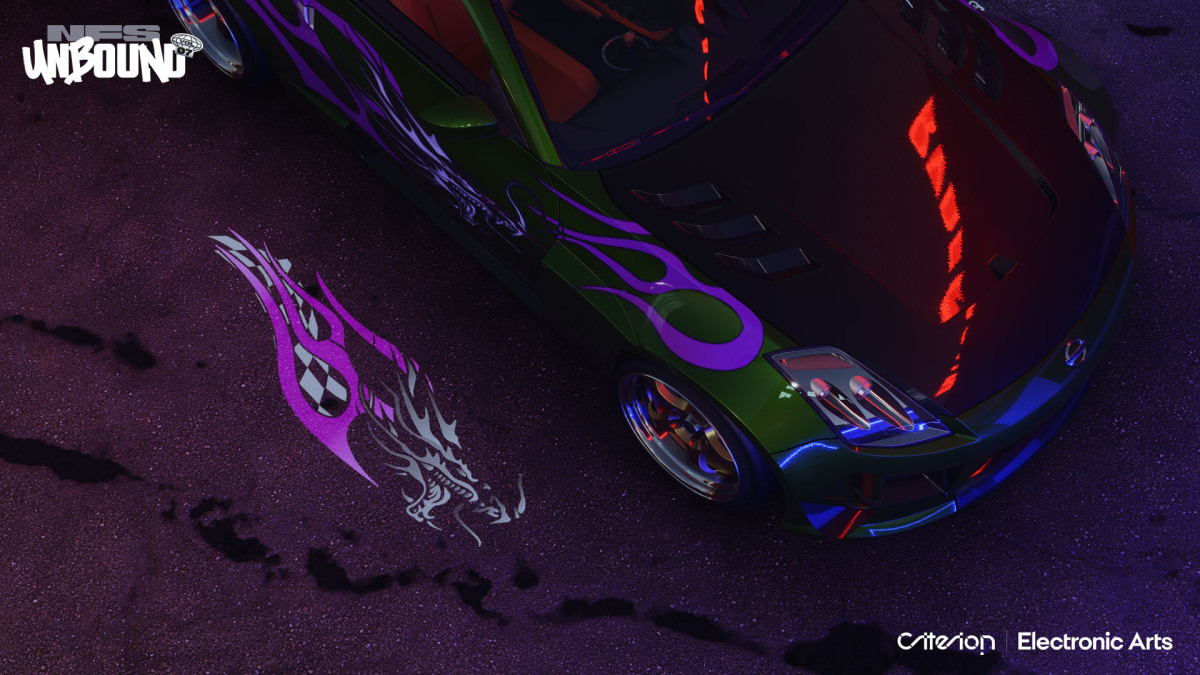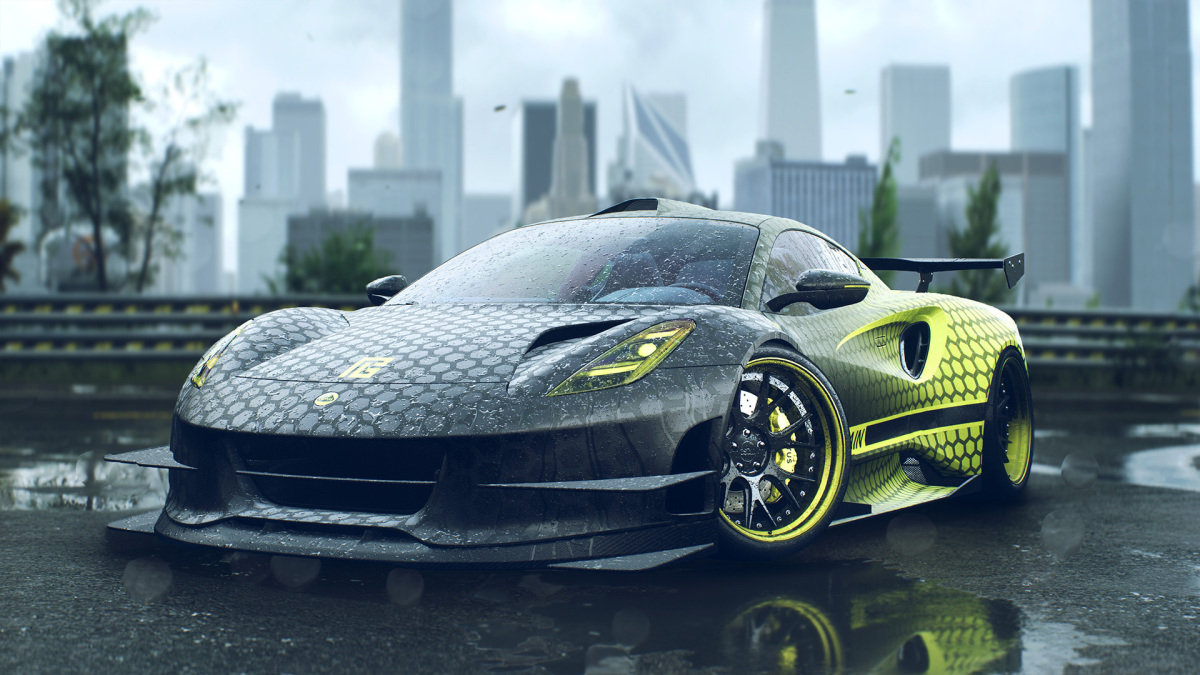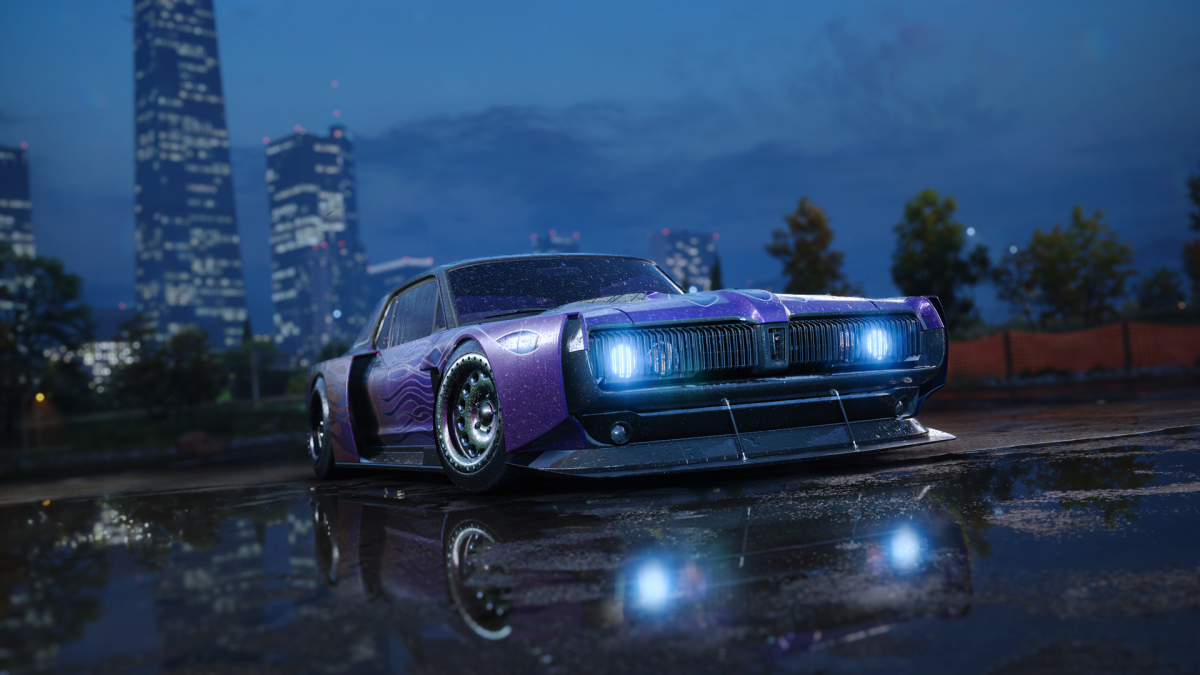It’s hard to believe there was once a time where racing games didn’t boast a gigantic amount of vehicle customisation.
Out Run, Ridge Racer, Sega Rally. These arcade classics are fondly remembered for their gameplay and graphics, yet the only thing you could edit was the username for topping a leader board. Not that it made the experience any less addictive.
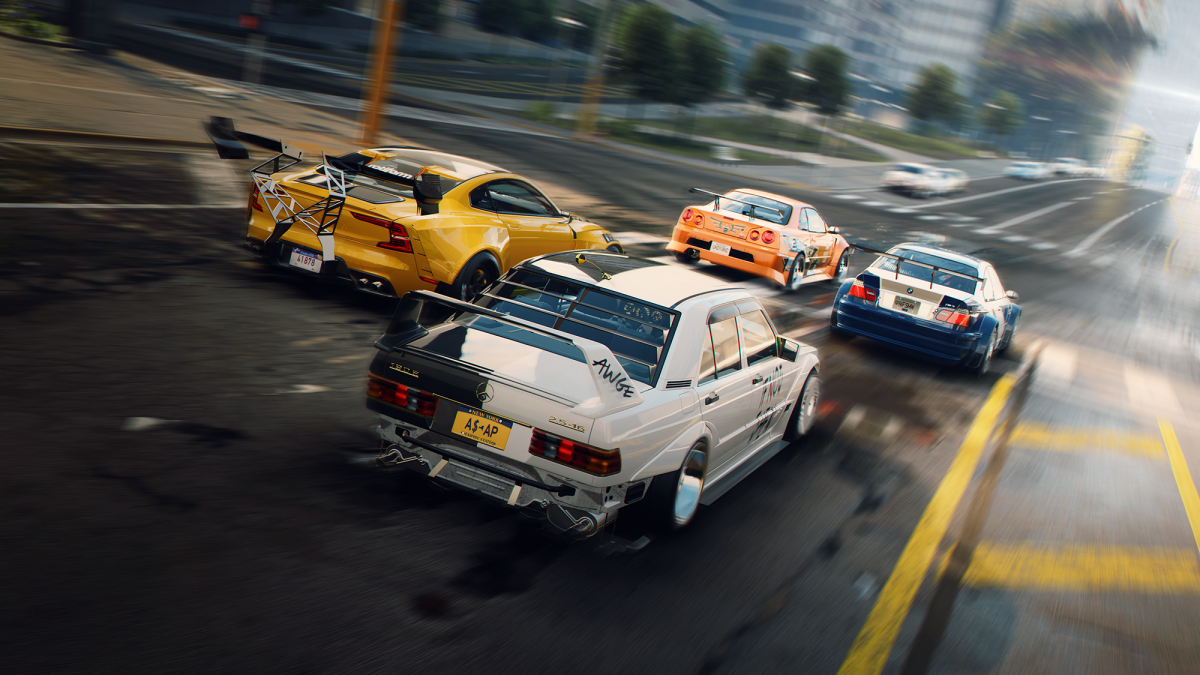
Even the very early Need for Speed titles had to make do with little or no vehicle customisation. The first ‘proper’ bodykits arrived in 1999 with High Stakes, something that would become an integral part of future titles like Underground and Most Wanted.
So why the big fuss about vehicle customisation now when it’s been present for so long? Well, it’s important to understand why we love this element so much, be it in Need for Speed or any other racing game. Even the biggest titles will face some form of limitation with both car choice and track selection. But as soon as you introduce in-game customisation? That gives you an almost endless supply of vehicles to play with, both visually and performance-wise depending on what kind of racing you’re about to do.
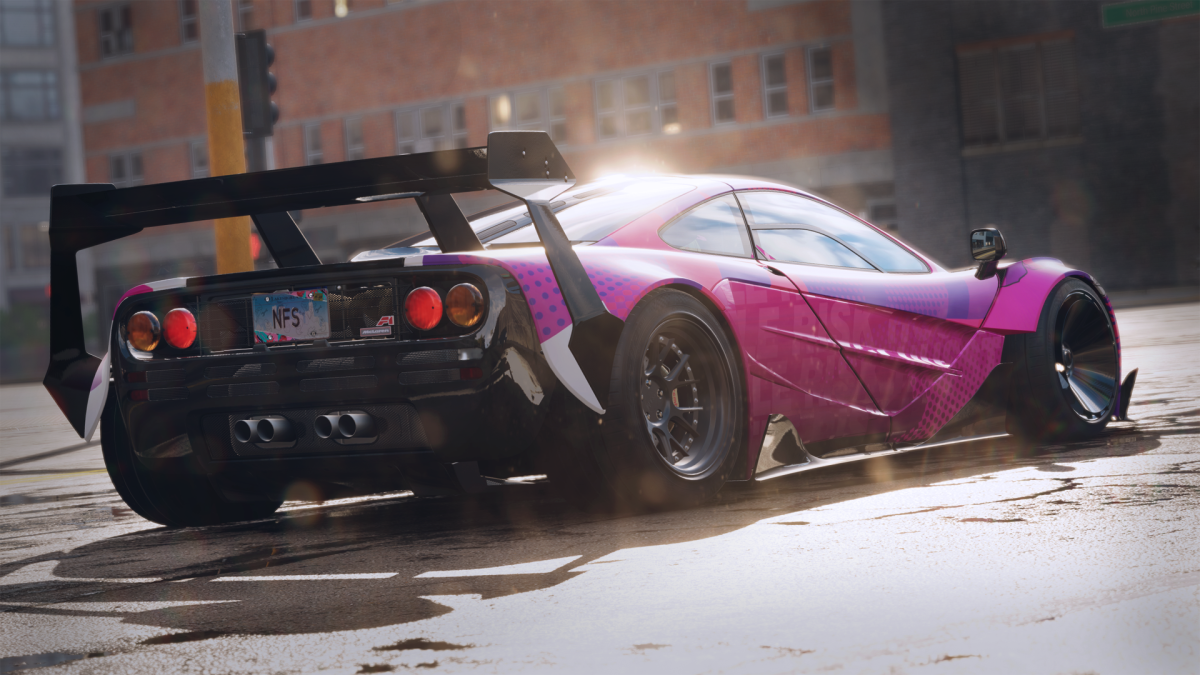
In 2024 it’s assumed that all new racing games will feature some level of customisation, be that a more realistic approach (focused on alignment, tyre choice and more) or the more arcade/entertainment form with pace-altering engine swaps, huge bodykits and hundreds of wheels. Seeing as you’re reading this on Speedhunters, we’re going to assume that the tuning approach is more up your street.
Now, we reference Need for Speed Underground a lot in these stories, and while it was far from the first game to boast in-game tuning, it undoubtedly revolutionised just how far individual cars could be taken while showcasing properly licensed products from real-world tuners. By the early 2000s, many other games provided a certain level of customisation for specific ‘premium’ vehicles, but Underground dialled everything up to the max whether it was a Honda Civic or a Nissan Skyline GT-R.

And in the titles that followed Underground so did the level of customisation; often changing but always present. One of our favourite elements from any game is Autosculpt introduced in NFS Pro Street, which allowed bodykits to be further sculptured as big and wide as a user desired, not just an amount pre-determined by the designers.
But here’s the thing – it’s very easy to assume these functions and customisations are easily added, and it can feel disappointing or even frustrating when certain parts or functions are no longer included in follow-up titles. In reality, there’s a whole load of hoops to jump through when getting any customisable part in-game. From scanning those individual parts, which is relatively straight forward, to then licensing every sticker, wheel or bodykit with the manufacturer, which can (understandably) cause a few headaches.
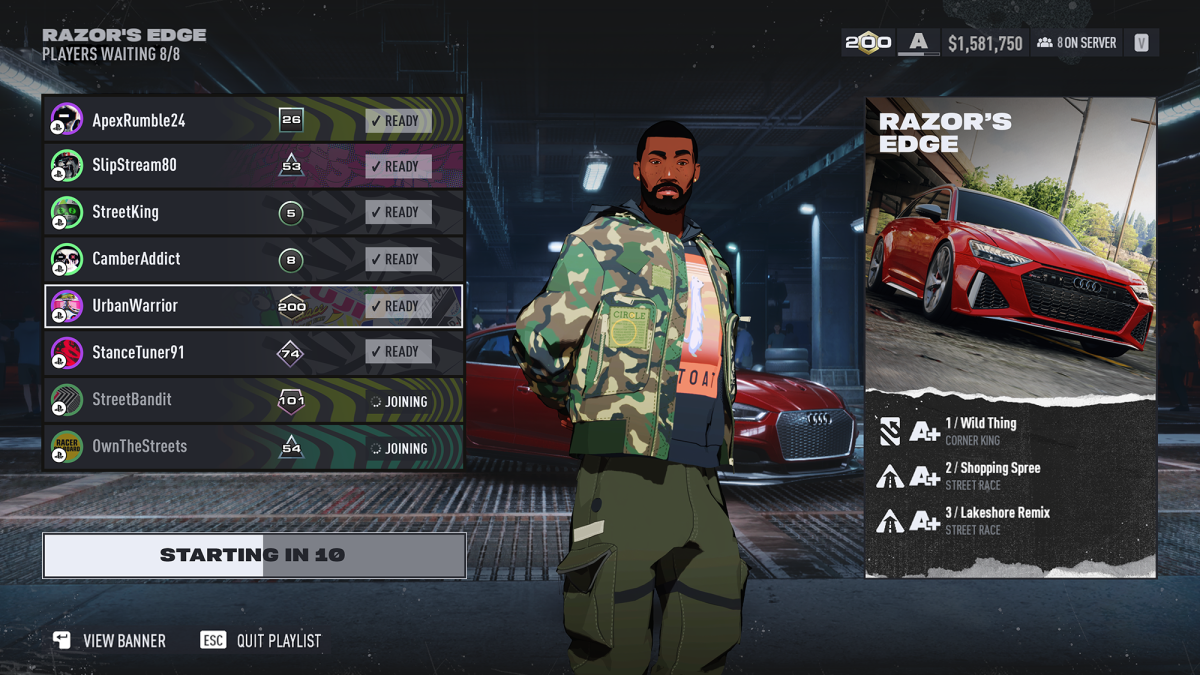
Every single component is the result of discussion, time, and money. And while every choice may not be to your taste, it all adds to the experience for every type of car fan – old or young, male or female. Oh, and apparently not everyone wants RAYS Volk Racing TE37s on their cars as a default, but we’ll argue that point until we die…
Alright, so why have this discussion now? Well last month – during the Volume 7 update of NFS Unbound – we unveiled two Speedhunters customs that were added to the line-up as un-lockable, playable vehicles. This wasn’t the first time Speedhunters has featured in NFS, but getting to see an idea become a (virtual) reality is something we’re still hugely excited and proud to be a part of. So naturally, we’re going to shout about it some more.

Our two vehicles included the BMW M3 Touring and Ford Mustang Dark Horse, both taken in very different styles, but both utterly awesome in their own right. Rather than just unveil them with no further context, we figured we’d take some time to deep dive into just how these two cars became in-game customs, and exactly what that process looks like from beginning to end.
Stage 1: Before The Custom
NFS Unbound features 143 in-game cars as standard (excluding updates), so if you’re wondering why an M3 Touring and Mustang Dark Horse were chosen the answer is fairly simple – these were the two cars decided to be included during the Volume 7 update, along with a whole host of upgrades and game tweaks.
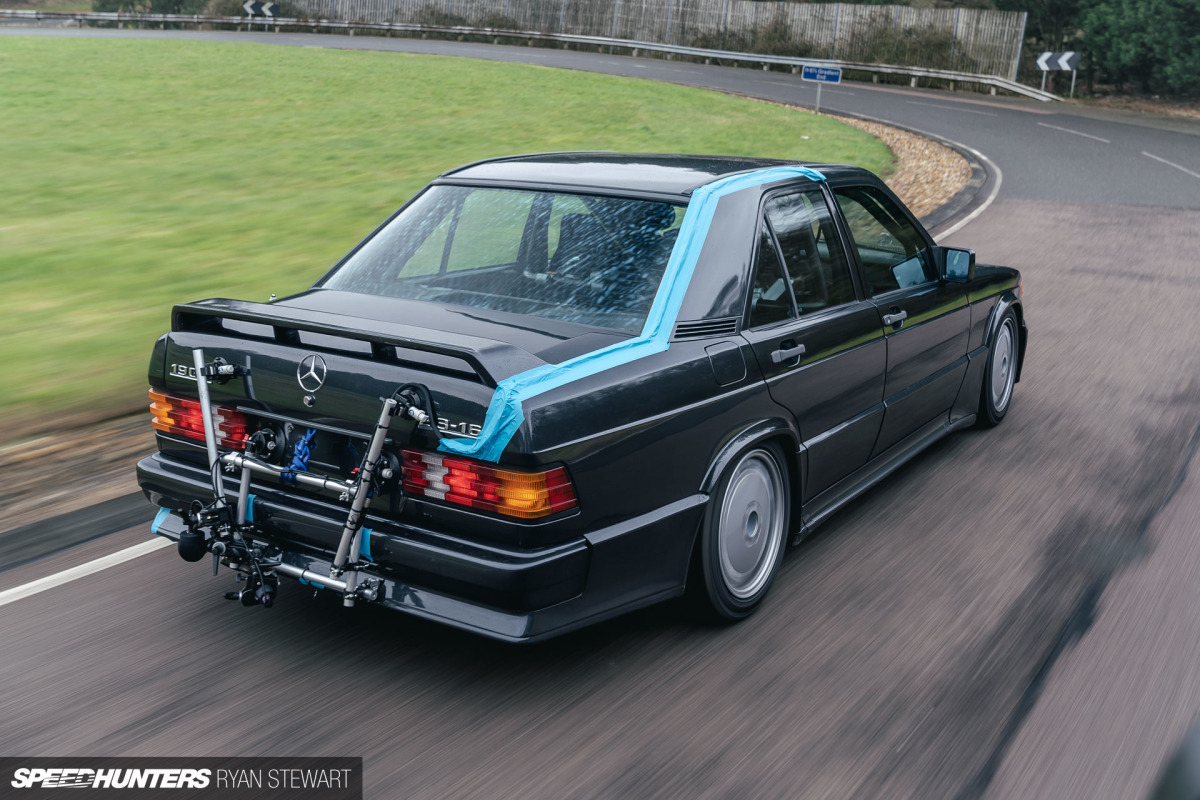
How and why are cars like these chosen? That’s a combination of what’s available to scan, what a manufacturer is prepared to be licensed and – above all else – what is going to add the most value and fun to the players. You’ll see from past updates these bonus cars tend to be a mix in order to appeal to the widest audience, which is why you’ll see everything from a 1981 DeLorean DMC-12 to a 2021 Maybach S 680 working their way into the game.
So, with the pool of cars available and signed off long in advance, now the fun can actually start – time to start customising ‘em.
Stage 2: Initial Ideas & Design
For our two customs, the plan here is to create a car you’d expect to see featured on Speedhunters. Simple, right? Well, almost. Because as much as this needs to be a Speedhunters-themed car, it also needs to be exciting and eye-catching for gamers, who would probably get bored if every SH car only came lowered on TE37s. Again, we’ll argue that point later.

NFS Unbound is bright, vibrant and fast-paced, so it’s important the cars reflect that. What’s more, with the theme of Volume 7 being centred around Drift & Drag, any ideas or designs should at least reflect that to feel like an integral part of the update. We’re still holding out for the Donks & Swangas update in the future.
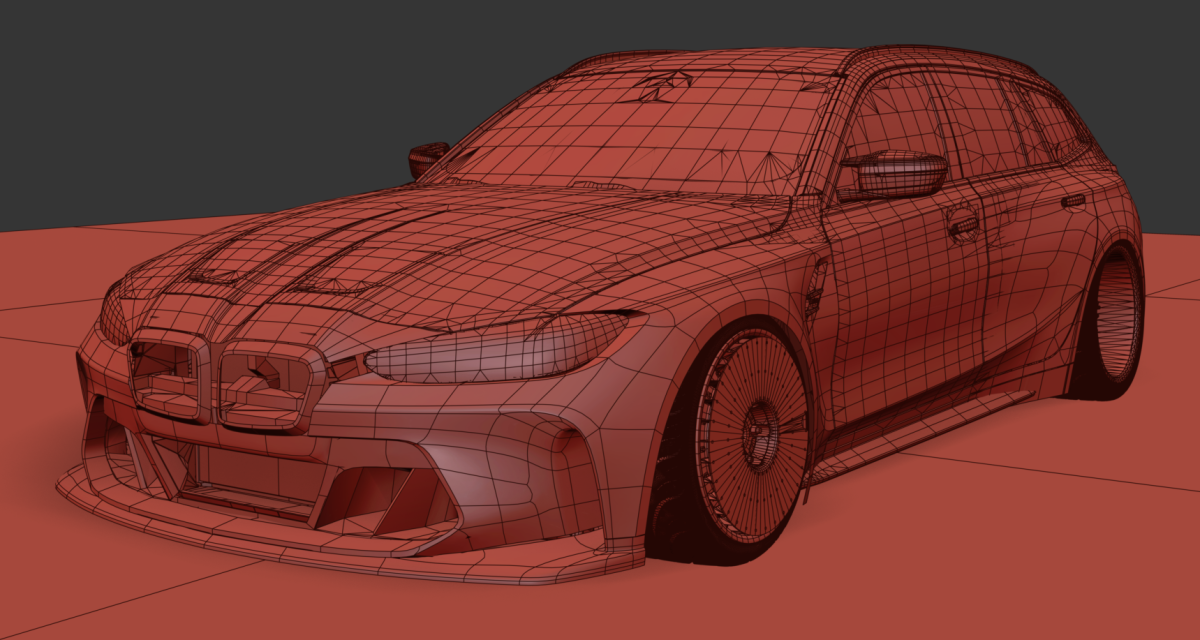
You’ll know by now our M3 Touring assumed the role as a Final Bout–style drift car while the Mustang went along the lines of a full-on street demon drag car. To reach this point, multiple ‘mood boards’ are put together on each car; basically a posh way of describing image-led inspiration taken from other vehicles to create a theme. Think of it like being in a WhatsApp car chat but without the LiveLeak videos.

In addition to the visual inspiration, specific elements and requests are then annotated and outlined to give the designers a solid base to start from. This could be as simple as deep-dish wheels or could be as complex as specific patterns and vinyl print across the bodywork.

As much as the virtual world isn’t real, it still has its limitations as to what can be physically added. Wheels and other components can only be used if already licensed in-game. The same goes with brand stickers and logos.
What’s more, the final designs also need to be sent to their respective manufacturers who – while not necessarily steering the look and design of the cars – obviously want to check that nothing too derogatory or risky is being included either.
Stage 3: Fire Up The Bryn
Bryn Alban is one of the masterminds behind the NFS design process at Criterion Games, and if you’ve been a Speedhunters regular for a long time, you’ll have seen his name multiple times in the past. Aside from being a killer artist, Bryn is a legitimate petrolhead with a background in motorsport (and modifying) – as well as competitively racing karts most weekends.
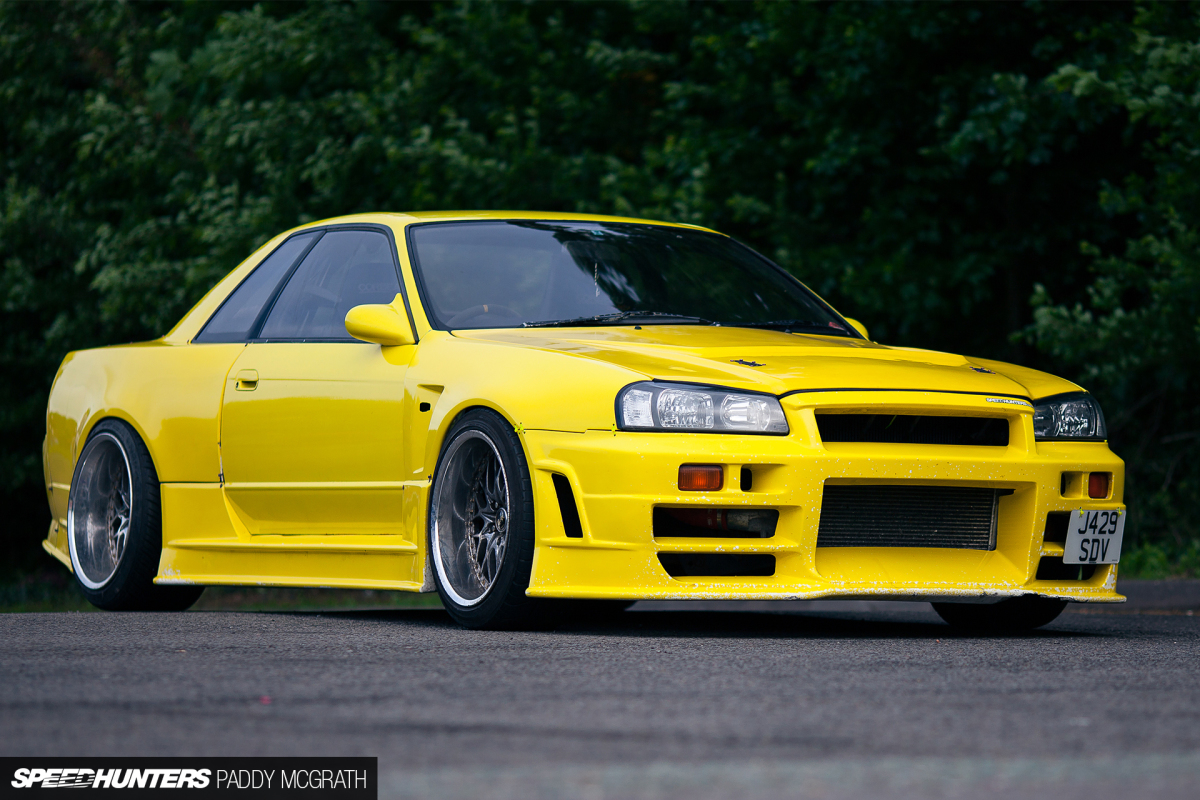
All of this is essential when trying to build a custom that’s not only exciting to look at and drive, but also feels authentic. So, when you say something like ‘Final Bout’ to Bryn, he’s not wondering why we’ve started playing Street Fighter mid meeting; he immediately knows what that brief entails and just what kind of drift ‘style’ is being targeted with this term.

Understandably, the process from a blank screen with a brief to actual playable car is the most time consuming and complex, so over to Bryn to help us explain…
SH: Bryn… simple question first. Where do you start?!
BA: When it comes to our Need for Speed customs the first thing we do is understand their purpose, how they fit in the game and why they exist. So, for example with the Speedhunters customs for Volume 7, we needed to understand how the two cars were going to work in the game, any limitations we had with them, and how we thought they’d be presented. With the two cars this time around we knew that one was to be a drag car and one a drift car. We also knew that these cars would feature in the Volume 7 key art which also gave us a good steer on what to focus on from a paint and wrap perspective. Once we know these fundamental design considerations, we can then move on with either creating our own mood boards or, as in this case, work with our partners to build up a good source of inspiration for the final look of the cars.

SH: How and where do you draw inspiration from, and how much of your own experience (and past modifying/building cars) is reflected in these?
BA: Inspiration and where it comes from depends entirely on the initial design direction and can vary wildly. If our design direction is a cop car then we’ll look for relevant reference in that space. If the direction is to build a drift-inspired wrap, then we’ll dig into that area. Speedhunters is a good resource for us when it comes to car culture-relevant looks, but we also tap into wider design inspirations when we need to go beyond that.

More often than not the direction usually spawns from conversations both with our Creative Director, our Art Direction team and our Art team. We’re spoiled by having a strong team of creatives at Criterion, and when you can pull together all their ideas that’s usually when magic happens. I also have a pretty varied history myself having built my own cars in the past (and currently in the middle of my next project), so I tend to lean on that knowledge fairly regularly.

I’ve also been very privileged to have been able to sample car culture from around the world as part of the Need for Speed team. I’ve been to several events, from SEMA in Las Vegas, to Formula Drift Japan at Fuji Speedway, to the crazy Gatebil events in Norway and Sweden. I’ve also been to events closer to home such as the Players events at Goodwood; these eyes have seen a lot over the years. There are more events and places I’d love to visit for more inspiration though.
SH: What are your favourite styles and design routes to go down (i.e. drift, drag) and which are your least favourite?
BA: My personal preference is the Japanese drift style and OEM+, so if you see those kinds of cars crop up in Need for Speed you’ll know that my passion has come through with them. OEM+ is one of the hardest styles to present in Need for Speed as its very nature is subtle and detail orientated, which for a casual observer is hard to differentiate from stock. There are a few examples sprinkled into the game in some places, but you really have to look for those details.
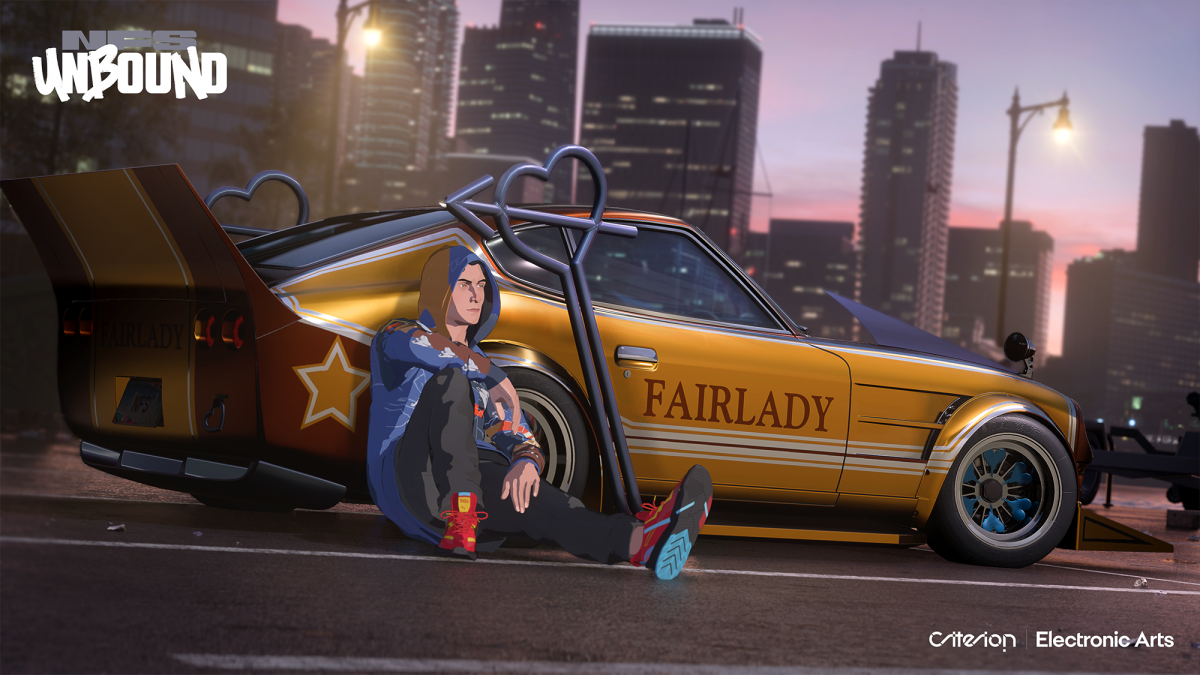
One of the most enjoyable cars to build was Waru’s bosozoku-inspired Nissan Fairlady in Unbound. One day I was just just doodling in 3D with the Fairlady and started to build out the crazy boso kit and the heart-shaped exhausts. It was meant more as a fun palette cleanser for myself, but when I showed it to a few people it was obvious that we needed to find a place for it in the game.

I enjoy making mashup designs too. One of my favourites was when we worked with Porsche on a previous custom, where we mixed design inspiration from their 917/20 ‘Pink Pig’ and the Weissach liveries, but in a distinctly Need for Speed way. We talked Porsche into allowing us to do a long tail inspired by the 935 but with exposed turbos and a semi-transparent rear clamshell. Least favourite? Sometimes it can be tricky to combine character biographies with a car that works authentically and still sits well in a car culture world. These are usually the ones that are hardest to work on. Then if you throw brand partnerships into the mix, they can quickly become a hot mess if you’re not careful.
SH: For each custom option, just how many hours would you say roughly go into each design?
BA: Each custom varies. Some come together really quickly, some take longer. Sometimes a deadline dictates the time we have to work on them. As a general rule of thumb, we tend to spend more time on the more important customs, and when we work with partners on the design that can take a little while longer to finalise, purely because of the more involved design and iteration process.

Some customs can come together in a matter of days, and some can take weeks. The most important customs can take months to finish up and get approved by all parties involved.
SH: What car(s) would you like to see added in future NFS games, and what design/route would you take with ‘em?
BA: This is a very good question! It’s one that I have to battle with on a regular basis, as sometimes my own personal preference can be at odds with what the game needs. My own personal preference is varied. Having owned numerous Skylines over the last 20 years, it’s safe to say I have a passion for old JDM cars. But I’m also a bit of a BMW fanboy. I’ve just bought a BMW 3 Series Touring as a new daily driver, and that’ll no doubt get some choice OEM+ mods over the coming months.

However, one car that is still on my personal list is a nice Mk2 Ford Escort. Childhood memories of my dad’s cars influence this choice. I’m going to need a bigger driveway and garage soon! So you may see some of that preference make itself known in the Need for Speed car lists, but we also have to consider other factors when we make our choices. Such as our relationships with manufacturers, what the cars need to do in the game, how we feel they fit into car culture, what we are able to do with them when customising, and how relatable or inspirational they are for our players.
SH: Once the designs are finalised and everyone is happy with the direction, what happens next before they’re ready to be played in-game?
BA: Once the design is locked in I’ll hand the reins over to one of our talented Vehicle Artists at Criterion. These guys are very much in tune with what we’re trying to achieve with Need for Speed and therefore they ‘get it’, which makes my job easy.



They’ll take the design concepts and mood boards and translate them into the final in-game builds. They’ll first build the cars out in our customisation experience in game, making choices for things like the wheels, tyres and body parts. Once they’ve made their selections they’ll move on to creating the one-off custom wraps. When finished, they’ll bake these options, parts and texture files into one custom and make it available in the game for players to unlock and play.
SH: And lastly, what’s your favourite custom you’ve ever made and why?
BA: This one is tricky! There have been so many. I’ve been involved in the creation of most of the customs, cover cars, character cars and unlockable cars in Need for Speed for the last 15 years, so it’s hard to choose. One that I’m most proud of would be the Need for Speed Unbound cover car – the Mercedes-Benz 190 E driven by A$AP Rocky in the game.
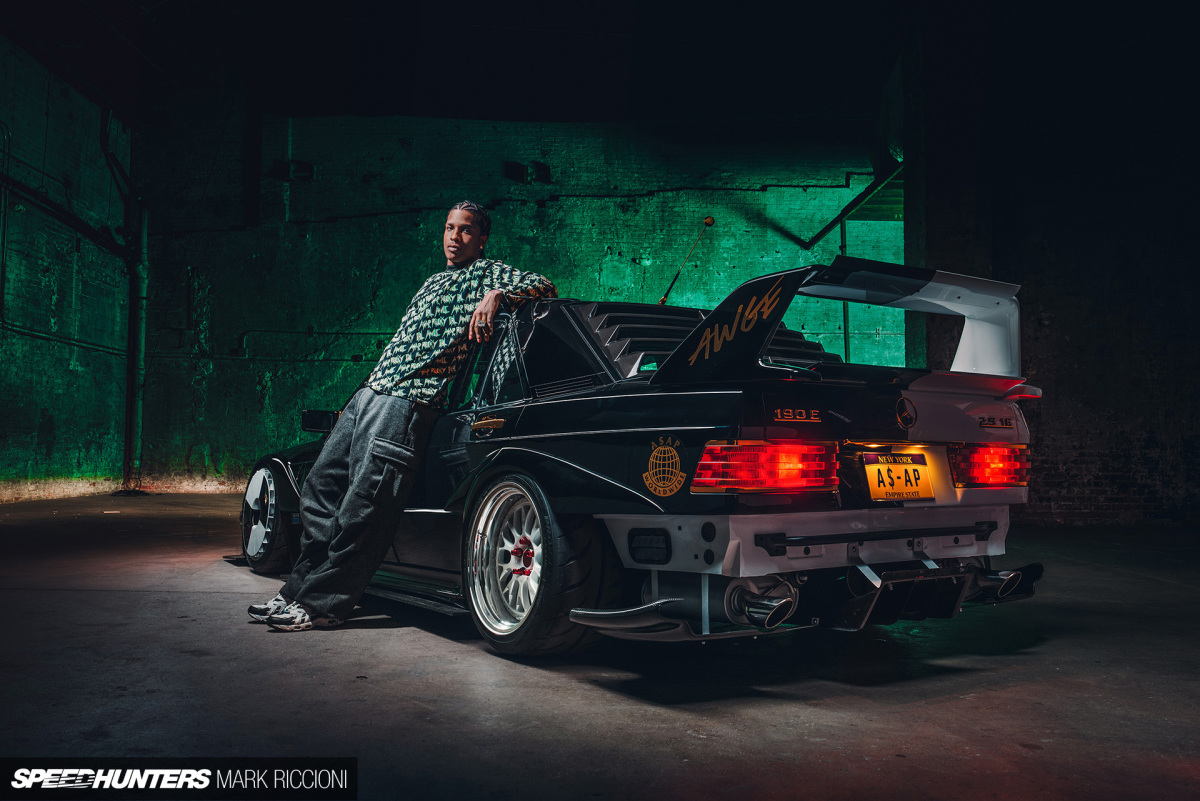
That car came together from initial concepts internally, to collaborating with Rocky and his team to then working with the Speedhunters team to build a fully-functioning 1:1 recreation in the real world. That one was a pure example of concept – to virtual – to reality.
Stage 4: The Final (Final) Design
By this point you’re in a pretty good position. Deadlines for vehicle design and sign-off hopefully haven’t been missed and everyone from the development team to the nit-picking monsters at Speedhunters are all aligned. Bryn and his team are long overdue a holiday, but we’re not over the final hurdle yet…

Before it’s all packaged and coded into the update, one of the most important parts is to render and visualise each custom in multiple environments and lighting scenarios. Because what looks brilliant against a white or grey design screen, doesn’t always translate once it’s placed within the in-game environments, especially with changeable lighting and weather conditions.

That’s because stickers, colours and custom LED components can all change massively depending on the environment. A matte black Speedhunters sticker might look great in bright conditions, but it’ll completely disappear as soon as the sun goes down.
There will always be updates required to any game, and with four new volumes being added this year for Unbound the development is relentless. But this isn’t an Instagram upload you can quickly edit if you got it wrong. Once this goes out, you’re locked in. So being rigorous with its design and testing is absolutely key.

Is the world of in-game customs pain-free and without compromise? Absolutely not. But the challenge of creating these models from a pot of ideas into a playable car never ever gets old. Just like real life, it’s a long process which will absolutely test every bit of patience you have. But that’s also what makes it so enjoyable. Car culture – be it in real life or virtually – is all about expression and enjoyment, and with more volume customs inbound soon, NFS Unbound is only going to keep getting better.
TheSpeedhunters
Instagram: thespeedhunters



